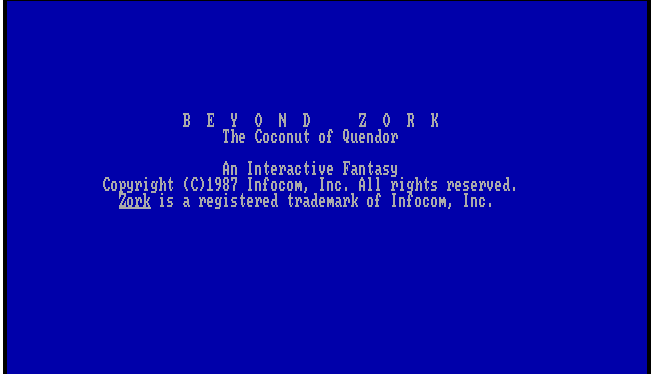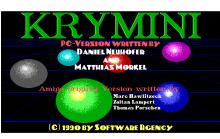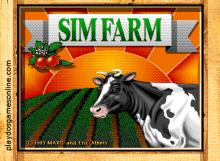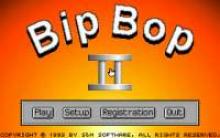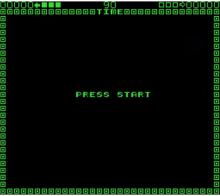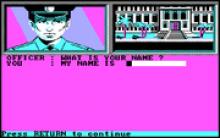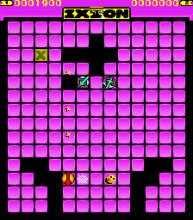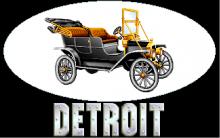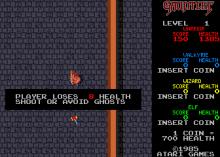Beyond Zork - The Coconut of Quendor
Press Keyboard right side: Alt+Enter keys to switch to full screen game play, and Alt+Enter keys to return.
How to play Beyond Zork - The Coconut of Quendor
Each game uses different controls, most DOS games use the keyboard arrows. Some will use the mouse.
Beyond Zork - The Coconut of Quendor Description
Beyond Zork (full title: Beyond Zork: The Coconut of Quendor) was an interactive fiction computer game written by Brian Moriarty and released by Infocom in 1987. It was one of the last games in Infocom's Zork series; or, rather, one of the last Zork games that many Infocom fans consider "official" (titles such as Zork: Nemesis and Zork Grand Inquisitor were created after Activision had dissolved Infocom as a company and kept the "brand name"). It signified a notable departure from the standard format of Infocom's earlier games which relied purely on text and puzzle-solving: among other features, Beyond Zork incorporated a crude on-screen map, the use of character statistics and levels, and RPG combat elements. It is Infocom's twenty-ninth game.
Plot
The player explores the Southlands of Quendor somewhat aimlessly at first. Soon, however, a task is bestowed by the Implementors, a group of godlike creatures jokingly based on Infocom's game designers. The Coconut of Quendor, an incredibly powerful artifact that embodies the whole of Magic, has fallen into the claws of an unspeakably foul beast: an Ur-grue. Rumoured to be the spirits of fallen Implementors, Ur-Grues can surround themselves in a sphere of darkness that only sunlight can pierce. The player must recover the Coconut from this monster's grasp or face the unthinkable consequences.
Ur-grue
Beyond Zork introduces the "Ur-grue", a being which game materials describe as the progenitor and ruler of the monstrous race of grues—the term "Ur-grue" combines the German prefix ur- signifying "very ancient" and "grue"—as well as the source of many other evil monsters. He is said to have originated as the shade of a "fallen Implementor". This is a reference to the Satan myth, since Infocom frequently made metafictional references to the "Implementors" as the creator-gods of the Zork setting, "Implementor" being the preferred in-house term for a game designer.
The Ur-Grue character in Beyond Zork may be a reference to Brian Moriarty himself,[citation needed] the creator of the game, who is notably absent from the game's portrayal of an "Implementors' Luncheon", where each Implementor is recognizably based on a member of the Infocom staff. His persona as the progenitor of grues and creator of monsters may be linked to his role as the creator of the games' challenges, Infocom having long made joking references to grues' being the foremost example of the Implementors' capricious, sometimes nonsensical design decisions.
The Ur-grue is revealed to be the primary villain of the story. The player, sent to retrieve the Coconut of Quendor from the Implementors, arrives at the Implementors' Luncheon on the Ethereal Plane of Atrii only to find he has been followed by the Ur-grue in shadow form, who takes the opportunity to steal it for himself. The player must then venture into the Ur-grue's extensive underground lair and retrieve it.
The Ur-grue is shown to be a dungeon master of sorts, controlling huge parts of the Zork underground and having accumulated an enormous hoard of treasure, of which the Coconut is his crowning acquisition. He has not only an army of grues at his disposal but also bizarre creatures of evil such as Lucksuckers, spirits who attack the player by draining his good fortune (reducing his Luck stat). The Ur-grue himself is surrounded by a pool of magical darkness that is capable of overcoming and destroying all artificial light sources, and is therefore only vulnerable to pure sunlight—the player, therefore, can only best him by using a series of mirrors to transmit a beam of light at him from outside the dungeon.
After doing so, the Ur-grue's shadowy form is dissipated revealing what may be his true form, that of a broken, withered old man. It is implied that the Ur-grue cannot survive long in this form and must possess others' bodies, like a Biblical demon, in order to survive—he attempts to possess the player. If he succeeds, a negative ending is revealed where the possessed player-character finds and strangles baby grues until he finds one strong enough to hold the Ur-grue's essence, implying that the Ur-grue's usual shadowy form is an enhanced version of a grue's body.
If the player's Compassion stat is high enough—represented by having done enough good deeds throughout the game—the Ur-grue is shown to be unable to possess the player, his evil apparently unable to coexist in the same body with an extremely pure or virtuous spirit, and the Ur-grue's old man form fades away. Whether this means the Ur-grue was permanently destroyed in this encounter is unclear, as is the possibility of others of his kind existing somewhere in the world, although, being magical in nature, it seems unlikely any Ur-grues could survive in Quendor following the Great Change.
Feelies
Almost since the company's beginning, Infocom's games included "extras" (called feelies) in the packages, often serving a dual purpose of entertainment and copy protection. Beyond Zork is no exception. The game package contained:
A large fold-out map of the "Southland of Quendor"
A small book titled The Lore and Legends of Quendor, a field guide of sorts to the flora and fauna of the area (several entries contained information necessary to defeat or incapacitate creatures in the game)







